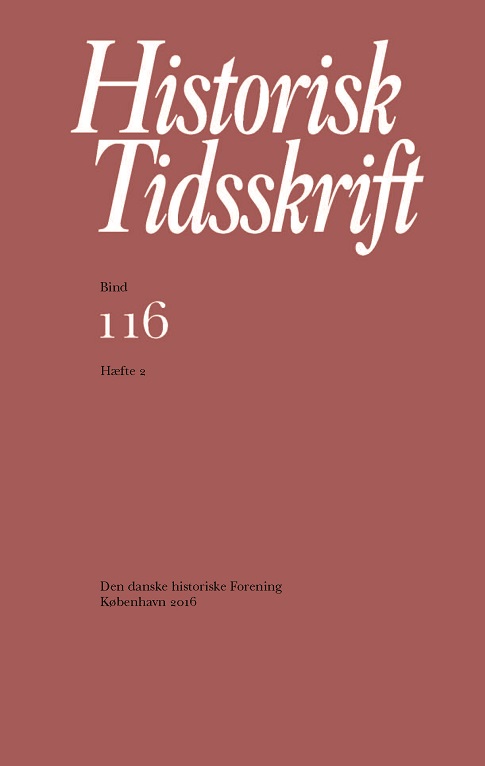Forråelsen. Kvinder, sædelighed og kriminalitet i Danmark under 2. Verdenskrig
Resumé
Brutalization. Women, Morality and Crime in Denmark during World War II
Until recently, the increase in sex crimes in Denmark during and after World War II has been attributed to moral panic regarding homosexual prostitution and waves of public alarm brought about by a press wallowing in spectacular and violent sex crimes against children. Yet, a scrutinizing review of national and local crime statistics reveals that the increase in reported incidents and convictions on incest and sexual abuse of children was the gradual effect of a new penal code inaugurated in 1933 and consolidated during the war. The efficiency of the new penal code was dependent on public acceptance and trust in the police, and the efforts of the latter had immediate results in reducing the dark figures of sexual abuse. Furthermore, a new level of convictions on rape and indecency – representing an increase of approx. 50% – was established during the war and persisted throughout the 1950's, suggesting an increased criminal activity caused by the stress – and opportunity – of war. The dramatic increase in violent crime committed by women during the war has been explained by the rise in convictions for the deliberate transmission of venereal disease. Though the number of convictions had increased dramatically by 1941, and on average represented 38% of all women convicted of a violent crime, it is not a sufficient explanation. A growing number of convictions for criminal abortions accounts for half of all women convicted of a violent crime in 1942 and 1943. Still, the rise in the number of female offenders does indicate brutalization and disturbance of civil society even under the relatively lenient conditions in Denmark during the war.
The revision of crime statistics offers new insights into the disciplinary response of the authorities on changes in sexual behaviour during the German occupation of 1940-1945. The moral panic regarding changing sexual norms penetrated the legal system in 1942. It targeted women who had illegal abortions, were infected with venereal diseases or were convicted of procuring. The increased number of convictions and a reduced number of settlements was the legal system’s attack on sexual liberation and reproduction control – exercised by women – during the war years. It was a prelude to the moral political reaction in postwar Danish society.
Downloads
Publiceret
Citation/Eksport
Nummer
Sektion
Licens
Ophavsret til bidrag i Historisk Tidsskrift tilhører forfatterne og Den danske historiske Forening som udgiver af Historisk Tidsskrift. For illustrationer gælder den ophavsret, som står anført i billedteksten. Ophavsretslovens almindelige bestemmelser gælder, hvilket vil sige, at ophavsretten gælder i 70 år efter forfatterens død. Bidrag i Historisk Tidsskrift må derfor, med forbehold for en ”moving wall” på tre år, frit downloades, læses, gemmes, anvendes og citeres (med kildeangivelse) i privat og videnskabelig sammenhæng, men de må ikke helt eller delvis genudgives af tredjepart, heller ikke i redigeret form, uden tilladelse fra forfatterne og Den danske historiske Forening. Henvendelse skal i så fald rettes til Historisk Tidsskrifts redaktion på histtid@hum.ku.dk.





